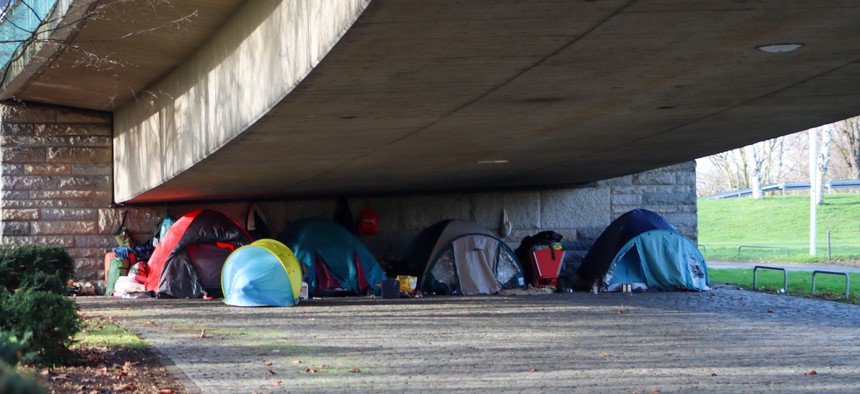Homelessness could have a 3D-printed solution

Kazim Yildirimli/Getty Images
An innovative pilot in Chattanooga aims to tackle the challenge of sheltering homeless residents.
3D printing isn’t just for creating custom keychains and tech accessories. It can also be a solution to the nation’s homeless crisis.
In recent years, state and local governments have tested the potential for large-scale 3D printers to build homes much more quickly and inexpensively compared with traditional construction, which can take months to construct a single concrete- or wood-based home.
Chattanooga, Tennessee, is the latest city to leverage 3D printing to get more of the city’s unhoused residents into homes.
“From 2022 to 2023, we saw the largest reduction of unsheltered homelessness in the country,” said Mike Smith, executive director of the Chattanooga Regional Homeless Coalition. “Even though we've made great progress, we don't want to stop there.”
On July 7, the city launched a 12-month pilot program in partnership with Branch Technology to evaluate single-unit shelters for individuals experiencing homelessness. The two foam insulated and fire resistant shelters have 3D-printed carbon fiber panels that were transported and assembled onsite within hours, the Chattanoogan reported last week. The city paid $19,000 of construction costs through its innovation fund.
The 3D-printed pods aim to reduce burdens on homeless shelters, not necessarily replace housing, Smith said.
“You’re not going to want to live there forever,” he said. Occupants will still be engaged in the housing process, but they can live in a secure home while they file for unemployment or disability benefits.
Indeed, the shelters were designed with input from people who have experienced homelessness. For instance, the units contain an elevated bed, heating or cooling systems and locks. Smith, who has been homeless, said these features allow occupants to leave their belongings to search for jobs or permanent housing. They also foster a sense of safety and security.
Last year, Virginia saw the completion of the state’s first two 3D-printed homes in Richmond and James City County. The latter home was constructed within 20 nonconsecutive hours, demonstrating the potential for rapidly manufacturing housing at low costs. Elsewhere, Maine recently explored how the state could leverage its bountiful forests to 3D print homes from wood fiber as a cost effective and sustainable housing option.
“These units are not going to be the end all answer that we're looking for,” Smith said. “They will be a part of the continuum.”






